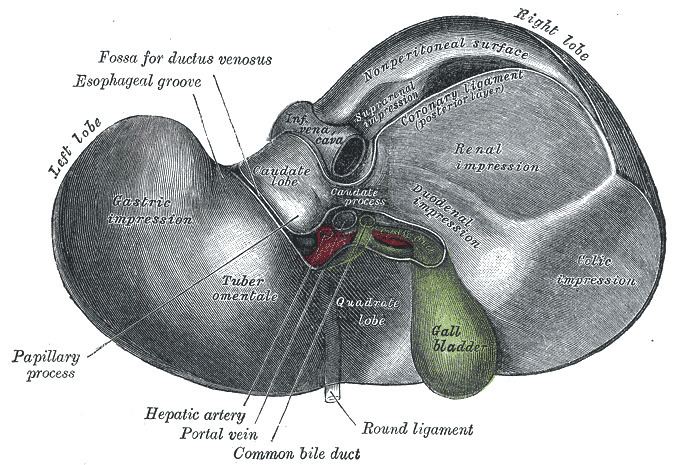TA A05.8.01.015 | Dorlands/Elsevier l_09/12493344 FMA 14079 | |
 | ||
Latin ligamentum teres hepatis | ||
In anatomy, the round ligament of (the) liver (also commonly known by its Latin name, ligamentum teres - or more specifically ligamentum teres hepatis) is a degenerative string of tissue that exists in the free edge of the falciform ligament of the liver. Anatomically, the round ligament divides the left part of the liver into medial and lateral sections.
The round ligament represents the remnant of the fetal umbilical vein. The round ligament therefore only exists in mammals. Prenatally and for a month or two after birth, the umbilical vein is patent, subsequently degenerating to fibrous tissue, the round ligament.
In adult-hood, small paraumbilical veins remain in the substance of the ligament. These act as an important portacaval anastomosis in severe portal hypertension, resulting in a caput medusae presentation.
The umbilical vein/round ligament inserts around the umbilicus and is an important landmark of the inner surface of the anterior abdominal wall.
